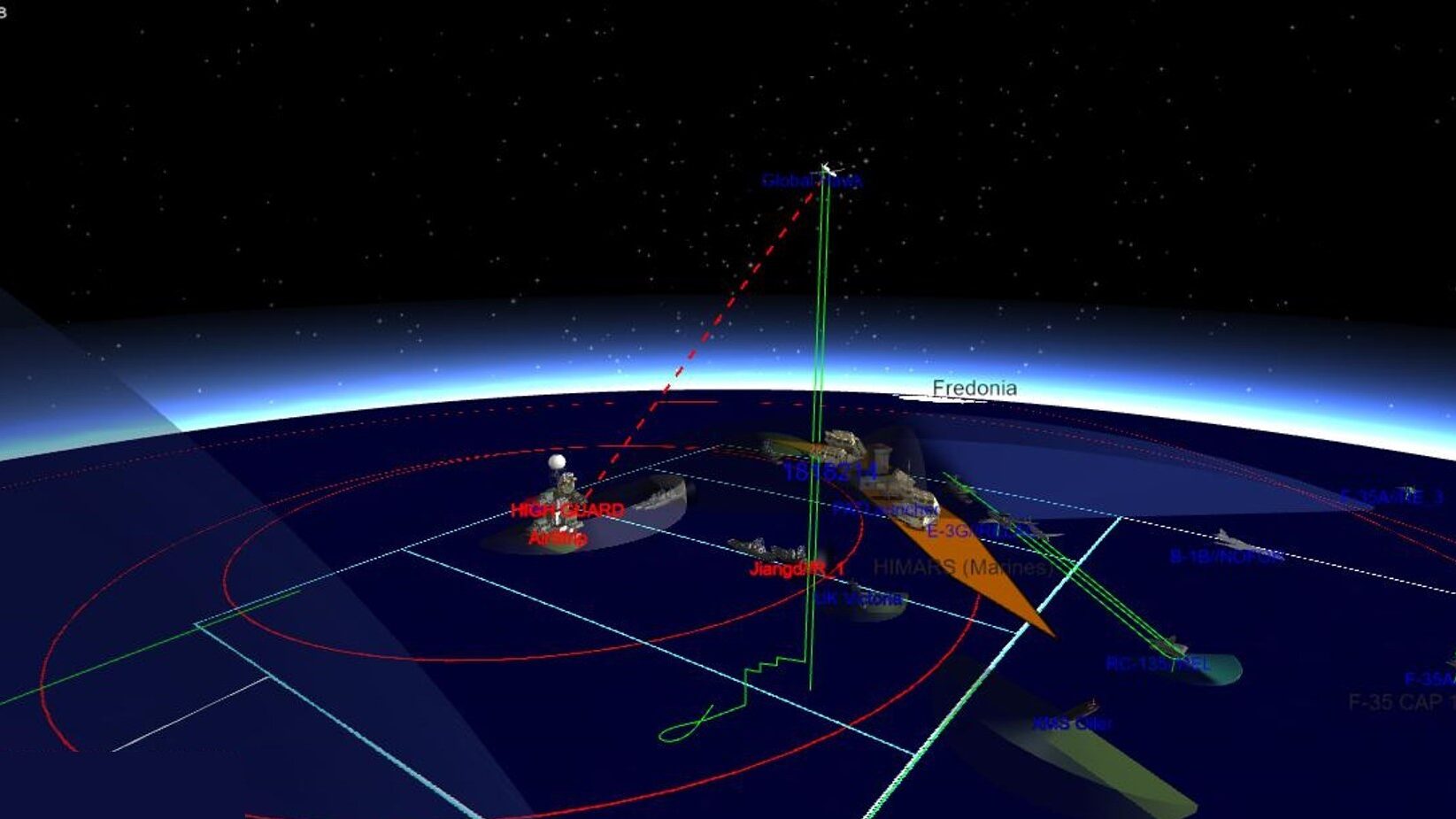JASPREET GILL

The Joint Staff’s Joint All-Domain Command and Control Campaign Plan Experiment 2 allowed Army, Navy, Air Force and Marines nodes to share near-real time information to enable sensor to shooter linkages and display it on a common operational picture. (U.S. Army Joint Modernization Command)
WASHINGTON — The point of the Defense Department’s Joint All Domain Command and Control (JADC2) effort is to connect “sensors to shooters” throughout the future battlespace, but an official said today that “going forward,” the acronym to look out for is “CJADC2,” reflecting a renewed emphasis on “combined” efforts with international partners as well as different military commands.
“The ‘combined’ is to highlight that we’re going to start out with these capabilities by being interoperable from the beginning,” Lt. Gen. Mary O’Brien, director of C4 and cyber and chief information officer, J6 of the Joint Staff, said today at the Potomac Officers Club 4th Annual CIO Summit. O’Brien suggested JADC2 needed to be effective globally, whether leveraged by different US combatant commands or foreign allies.
The focus on the “C” follows what DoD was tasked to do in the National Defense Strategy, which says that interoperable command, control, communications and computers (C4) warfighting capabilities need to be developed with allies and partners to “facilitate global force integration and supportive and combined joint operations,” O’Brien said.
“CJADC2” isn’t entirely new. It was the term used by officials back in 2020 when the Army and Air Force inked an agreement to build out a network that would pull data from all domains for the effort, though each would maintain their own individual contribution to JADC2. And although the Navy wasn’t a part of that collaboration, service officials have said they want to “plug into JADC2” with Project Overmatch, their own contribution to JADC2. (At the time, the “combined” part referred to allies, whereas “joint” referred to unity among the services themselves.)
O’Brien said today that the J6 is working closely with the Five Eyes intelligence-sharing alliance on how to also share applications and data. It’s also working with NATO on how to “influence our CJADC2 reference architecture.”
“We’re working very closely with a lot of our partners who want to know what are we going to build to so that their capabilities will be complementary,” she said. “And so the ‘C’ is absolutely for combined, highlighting that we can’t build something and then reverse engineer some sort of all interoperable bolted-on piece — it’s just not going to work in the way we’re designing the command-and-control capabilities for the future.”
As the Pentagon moves forward with the CJADC2 concept, O’Brien added that the department will focus more on advancing “global military integration in the C4 cyber business” and optimizing a joint force commander’s “ability to command and control across all warfighting domains with allies and partners.”
“Our environment today will require this global military integration, our C4 systems are going to have to enable trans-regional operations, we’re going to have to integrate across the different [areas of responsibility] across the different combatant commands,” she said. “And then also across the functional commands, and we want to maintain an improved competitive advantage. This global military integration will depend on the development and application of emerging technologies.”
Put more simply, the already complex concept of JADC2 won’t be good for much if it’s designed without a global infrastructure in mind.
No comments:
Post a Comment